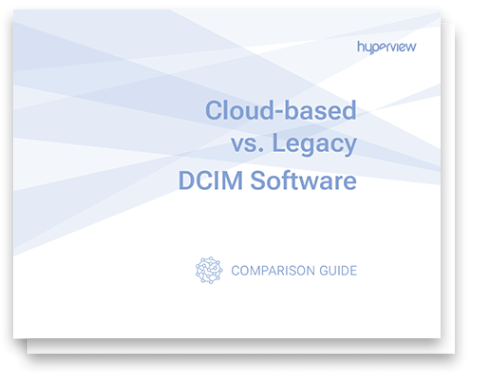Source: securityboulevard.com – Author: Rajan Sodhi
Imagine you’re at the helm of a ship navigating through turbulent yet uncharted waters. That’s the exact scenario data center managers find themselves in today as they confront the escalating demands of artificial intelligence (AI). By 2030, AI data center capacity is projected to grow by 33% annually, requiring businesses to invest up to $5.2 trillion in AI-specific infrastructure. The stakes couldn’t be higher, the challenges more daunting. Yet, the opportunity to lead the charge is unparalleled.
When AI’s computational demands collide with current inefficiencies in global data center capacity, it prompts an existential question for businesses: How can we efficiently plan for tomorrow’s AI capacity needs while keeping costs in check and meeting sustainability goals? This article dives deep into the strategic imperatives of advanced capacity planning and highlights game-changing solutions, like Hyperview’s Data Center Infrastructure Management (DCIM) software, to meet these challenges effectively.
The Three Pressures Driving the AI Data Center Crisis
1. Unprecedented Demand Escalation
Global demand for data center capacity is skyrocketing. From 2023 to 2030, power consumption across data centers is expected to grow by up to 22% annually, driven primarily by generative AI (GenAI) workloads. By 2030, AI workloads are predicted to account for 70% of total demand. This demand doesn’t just mean more hardware; it necessitates high-density computing environments to support training large language models like GPT and real-time inference systems.
Challenges:
- Balancing AI-intensified workloads against limited physical and power availability.
- Handling complexity across co-located and hybrid cloud environments absorbing 60-65% of US and EU AI workloads.
2. Power and Sustainability Crisis
Power fuels every bit of computational advancement, yet the sudden rise in high-density servers has made this a scarce commodity. For instance, modern AI server racks operate at energy densities of 17 kW, expected to surge to 30-50 kW within a few years.
Key Issues:
- Power grids in traditional hubs like Northern Virginia are maxing out, causing delays in buildouts.
- Liquid cooling solutions, essential for advanced AI models, demand significant infrastructure changes.
- Meeting sustainability goals while consuming more electricity than entire nations will require innovative resource management.
3. Economic and Operational Complexity
Beyond technical challenges, economic factors make capacity planning a labyrinthine endeavor. With a trillion-dollar capital investment forecast, delays in data center construction (averaging 18-24 months) frequently cause cost overruns of 25% or more. Without precise planning tools, this can spiral into inefficiencies and stranded investments.
Competing Through Precision: The Case for Hyperview DCIM
To combat these pressures, forward-thinking data center managers are turning to software solutions like Hyperview, a DCIM platform designed to provide real-time insights, optimize resource allocation, and mitigate risk.
Here’s how Hyperview helps transform capacity planning under pressure:
1. Unlocking Real-Time Visibility
Hyperview doesn’t just help you track the basics; it dives deep into your infrastructure, providing detailed insights into CPU, storage, and memory usage at both micro and macro levels.
- Feature: Supports complex queries and search for analyzing trends across Power Usage Effectiveness (PUE) metrics.
- What You Gain: Anomalies and stranded capacity are flagged before they escalate, reducing inefficiencies that cost millions annually.
2. Proactive Resource Identification
More than half of existing data center capacity operates below 50% utilization. Hyperview brings precision to resource management by rapidly identifying underutilized or “stranded” capacity.
- Feature: Detailed heatmaps and capacity reports pinpoint availability and constraints.
- What You Gain: Avoid costly expansions by unlocking current resource potential.
3. Risk Management Through Predictive Analytics
The future of data centers doesn’t just rely on solving today’s problems but predicting tomorrow’s failures. Hyperview’s graphing tools highlight metrics related to temperature anomalies, humidity imbalances, or power blips.
- Feature: Advanced visualizations and predictive insights for environmental and operational conditions.
- What You Gain: Safeguard uptime and eliminate risks impacting mission-critical AI applications.
4. Sustainability and Energy Optimization
Hyperview aligns capacity planning with global sustainability goals by emphasizing energy-efficient strategies.
- Feature: Monitors compliance with ASHRAE thermal guidelines while enabling liquid cooling adoption through custom infrastructure metrics.
- What You Gain: Reduce operational carbon footprints without compromising performance.
5. Streamlining Construction Lead Times
Hyperview integrates seamlessly with DCIM processes to streamline planning even for new construction efforts. Through its AI-driven simulations, stakeholders can map long-term capacity needs against growth trends.
- Feature: 10-year data visibility and simulation tools for future-proof scalability.
- What You Gain: Minimize buildout delays while keeping contractors on time and under budget.
Actionable Solutions for Data Center Managers
Facing this imminent crisis, the next six months are critical. Here’s where you can start:
1. Audit Your Existing Infrastructure
Evaluate capacity constraints in your facility today. Use tools like Hyperview’s automated asset tracker to identify gaps and predict future shortages.
2. Shift to AI-Specific Workflows
Prepare dedicated workflows to handle GenAI workloads. Transition older racks to newer, higher-density designs capable of supporting liquid cooling.
3. Invest in Modern DCIM Solutions
Modern capacity planning cannot be achieved without automation. Hyperview arms your team with the insights needed to succeed in both the short and long term.
The Road Ahead: Adopt, Optimize, Lead
The explosion in AI workloads isn’t slowing down. If anything, it represents the dawn of a new paradigm in how data centers are built, operated, and future-proofed. While the challenges of energy, resources, and costs persist, they also present opportunities for modern data center operations to step forward as enablers of global progress.
Are you ready to recalibrate your data center planning for the AI revolution? Start thinking long-term, and leverage the tools and methods that can give your enterprise the edge amidst unprecedented competition.
Hyperview empowers data center professionals to manage this transformation confidently. Don’t wait for demand to exceed planning. Prepare today. Sign up for a 30-day free trial or consult with a Hyperview specialist to build smarter, more sustainable facilities.
Original Post URL: https://securityboulevard.com/2025/06/smarter-data-center-capacity-planning-for-ai-innovation/?utm_source=rss&utm_medium=rss&utm_campaign=smarter-data-center-capacity-planning-for-ai-innovation
Category & Tags: Security Bloggers Network,DCIM Tools – Security Bloggers Network,DCIM Tools
Views: 3






















































